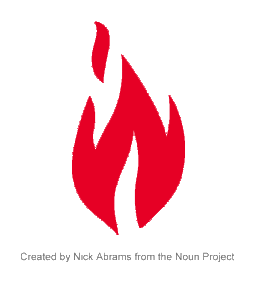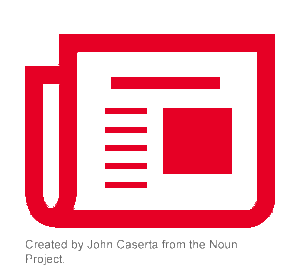September 29, 1868.
Emerson Bentley was a teacher and newspaper editor. He was the English editor of the St. Landry Progress, a Republican paper. This paper supported universal suffrage and equal rights for the recently freed black population. The white population of St. Landry Parish was overwhelmingly Democratic; as a result Bentley, his writing and even his teaching was a source of tension in the area.

Number of people who regularly came to the clubhouse attached to the St. Landry Progress office for Republican Party weekly meetings.

Estimated membership in to the Knights of the White Camelia group, a secret society similar to the Ku Klux Klan, as estimated by the Opelousas Courier, the parish’s Democratic newspaper. The stated goals of the Knights of the White Camelia were to preserve the “white man’s government” and to protect the region against “the uprising of the blacks” if necessary.
Major fears of the Democratic party in the summer before the event in Opelousas.
- White Radical Republicans through “incendiary speech” and late night meetings, would provoke freedmen into riotous behavior.
- The freedmen would burn down the town and kill the white residents within.
 Police pistols or revolvers that were said to be contained in a shipment of arms reported to arrive in St. Landry via a boat from New Orleans. These arms were allegedly to prepare white residents for an impending black uprising.
Police pistols or revolvers that were said to be contained in a shipment of arms reported to arrive in St. Landry via a boat from New Orleans. These arms were allegedly to prepare white residents for an impending black uprising.
 Number of people who were rumored to attend a Republican meeting on September 13 in Washington, Louisiana (6 miles from Opelousas). In response, parish whites armed themselves believing that blacks intended to burn Washington to the ground and murder the inhabitants.
Number of people who were rumored to attend a Republican meeting on September 13 in Washington, Louisiana (6 miles from Opelousas). In response, parish whites armed themselves believing that blacks intended to burn Washington to the ground and murder the inhabitants.
 Violence that occurred during this meeting.
Violence that occurred during this meeting.
Armed whites reported to be hidden in the woods ready to take action if necessary.
In the next few days, local Democratic leaders expressed to Emerson Bentley that their armed presence at the Republican meeting was preventative in nature, and that was how it should be reported in the St.Landry Progress, or else Bentley “would be held personally responsible.”
Main terms in a peace treaty signed on September 19 between Democrats and Republicans following the meeting in Washington.
- Democrat and Republican meetings would allow all parish citizens to be included.
- No “incendiary” comments were allowed whether in newspapers or in speeches.
- Firearms were not allowed in any meetings or processions.
- Alcohol was not to be served at meetings or at locations near the meetings.
However, that day Bentley’s article about the events of September 13 appeared in the St. Landry Progress, and Democrats felt that it violated the terms of the peace treaty.
Men who went to see Emerson Bentley on September 28 at the school where he taught. They stated that Bentley broke the terms of the peace treaty with his article and demanded a retraction. Bentley signed the retraction, understanding that he was outnumbered, but the three men also beat him, hitting him approximately 30 times.
The children at the school fled the schoolhouse, and believed that Bentley was dead, a rumor that spread throughout the community.
Weeks it took for Bentley to escape Opelousas. This escape involved hiding behind the St. Landry Progress office, hiding in weeds, enduring a period of more that 33 hours without food or drink. He was chased by a body of armed men and hid in a series of safehouses. Finally, he made his way to Plaquemines Parish and from there was able to board a steamer to New Orleans.
With no evidence of Bentley’s body around, rumors of his murder continued to spread. Local Democratic leaders armed themselves with the goal of preventing any Republicans from organizing. In fear of a black insurrection, groups of armed men went from house to house searching for black people whom they arrested or worse.

Number of armed black men that one group of armed Democrats found. The Democrats ordered the black men to surrender their arms and to come with them. The black leader refused and gave the order to open fire. In this skirmish, one black man died, one horse died, and several parties on both sides were injured. 8 blacks were captured and taken to the local courthouse and later jailed.
Organized armed blacks found after this skirmish.

Number of whites who had gathered in Opelousas prepared for armed conflict.
By September 29, most black homes were abandoned. Their residents had either been taken away or had fled the area.

Number of blacks who had been rounded up and sent to prison in this time.
Of the aforementioned prisoners who were ultimately separated from this group of 29 and survived. The remaining prisoners were removed from their cells at night and shot in small groups in the woods where their bodies were left for several days, then shoddily buried, buzzards feeding on the body parts that were never fully covered.
 The materials used to produce the St. Landry Progress were destroyed and/or set on fire, quieting the Republican voice in the region. Also, the school were Bentley had taught was destroyed.
The materials used to produce the St. Landry Progress were destroyed and/or set on fire, quieting the Republican voice in the region. Also, the school were Bentley had taught was destroyed.
After September 28, no black person could travel into Opelousas without a red ribbon tied around their arm, a symbol that they had converted to the Democratic party. Blacks also filed protection papers which declared them to be members of a Democratic club which entitled them to the “friendship, confidence, and protection of all good Democrats.”




